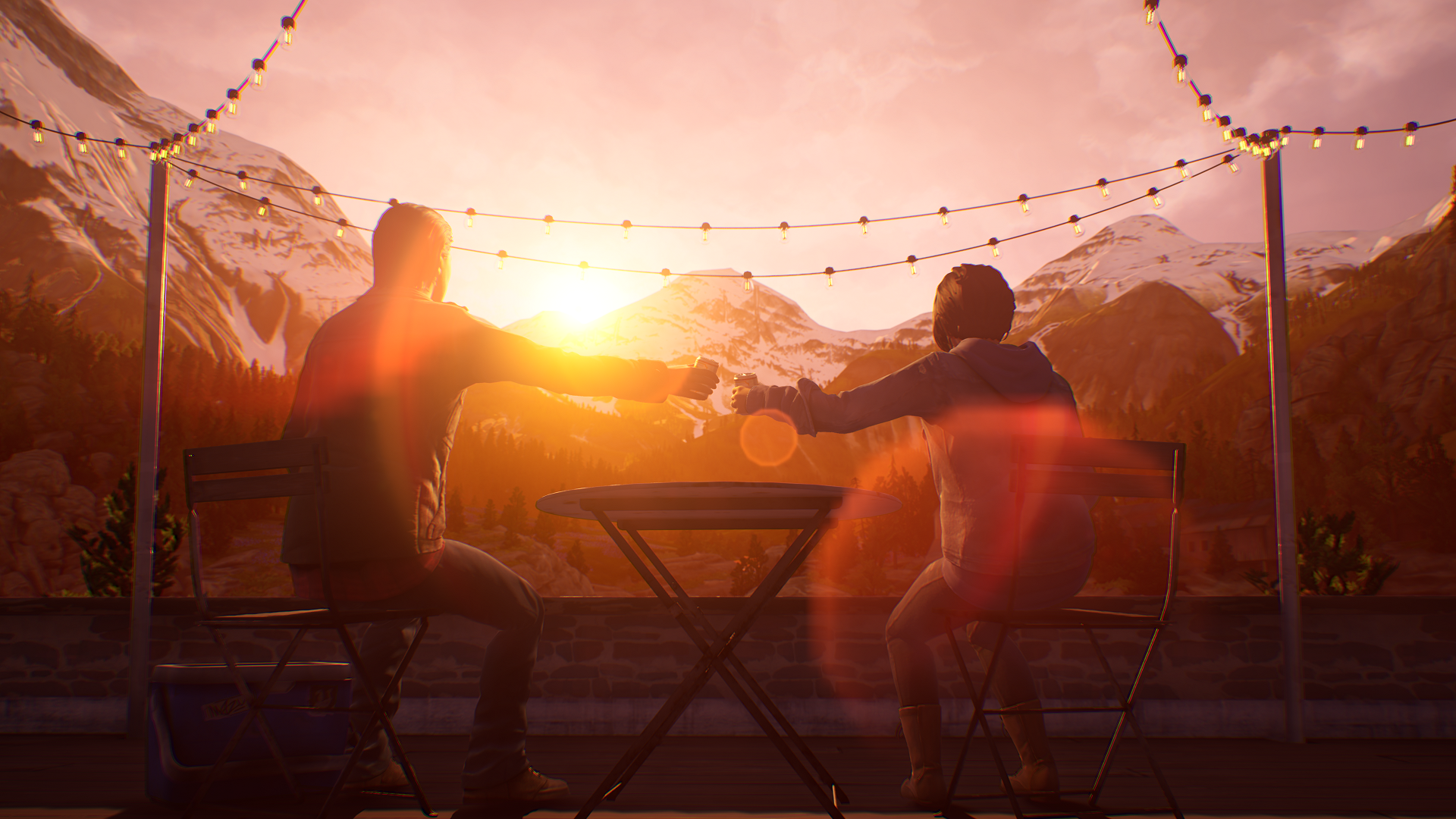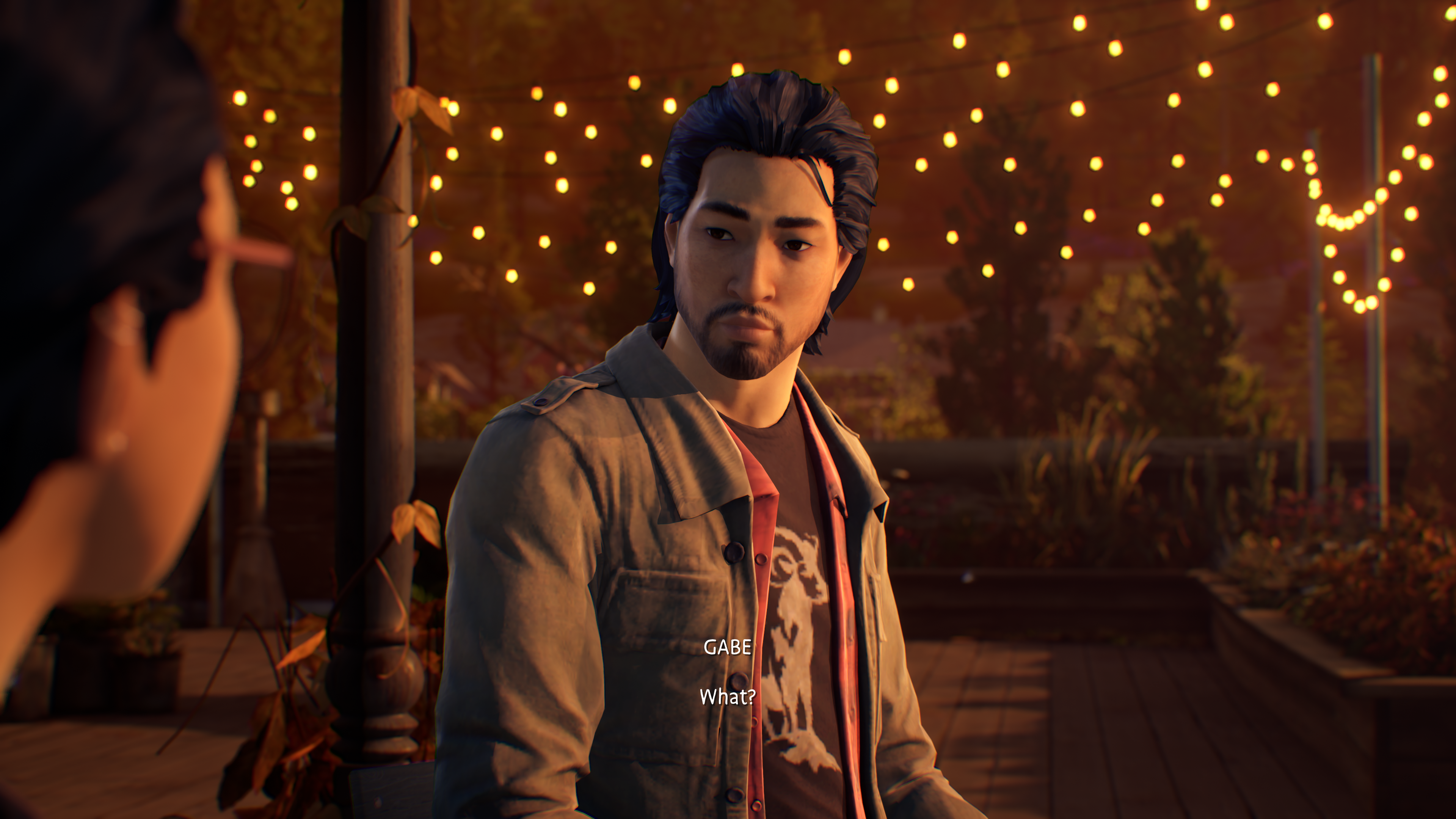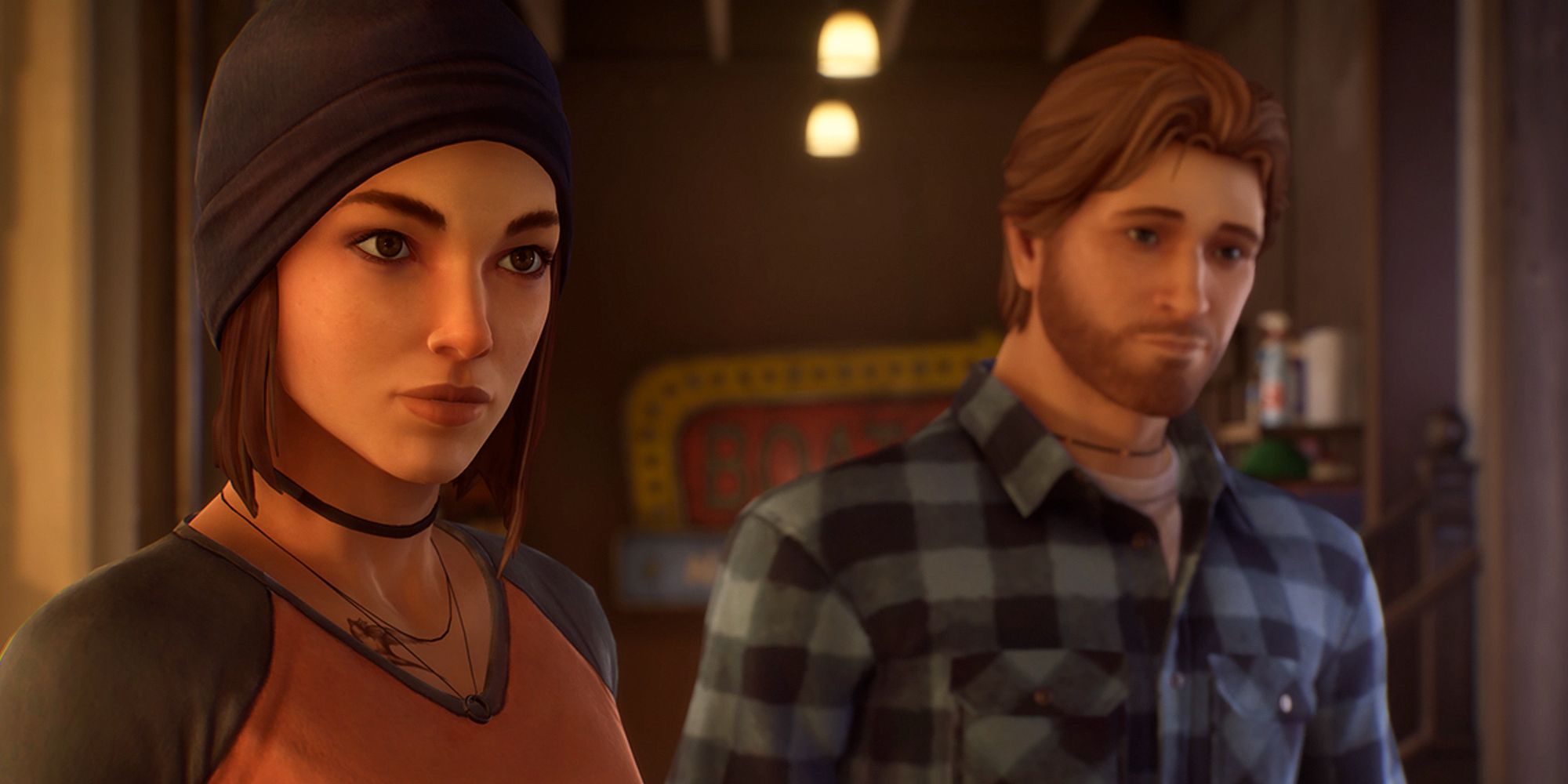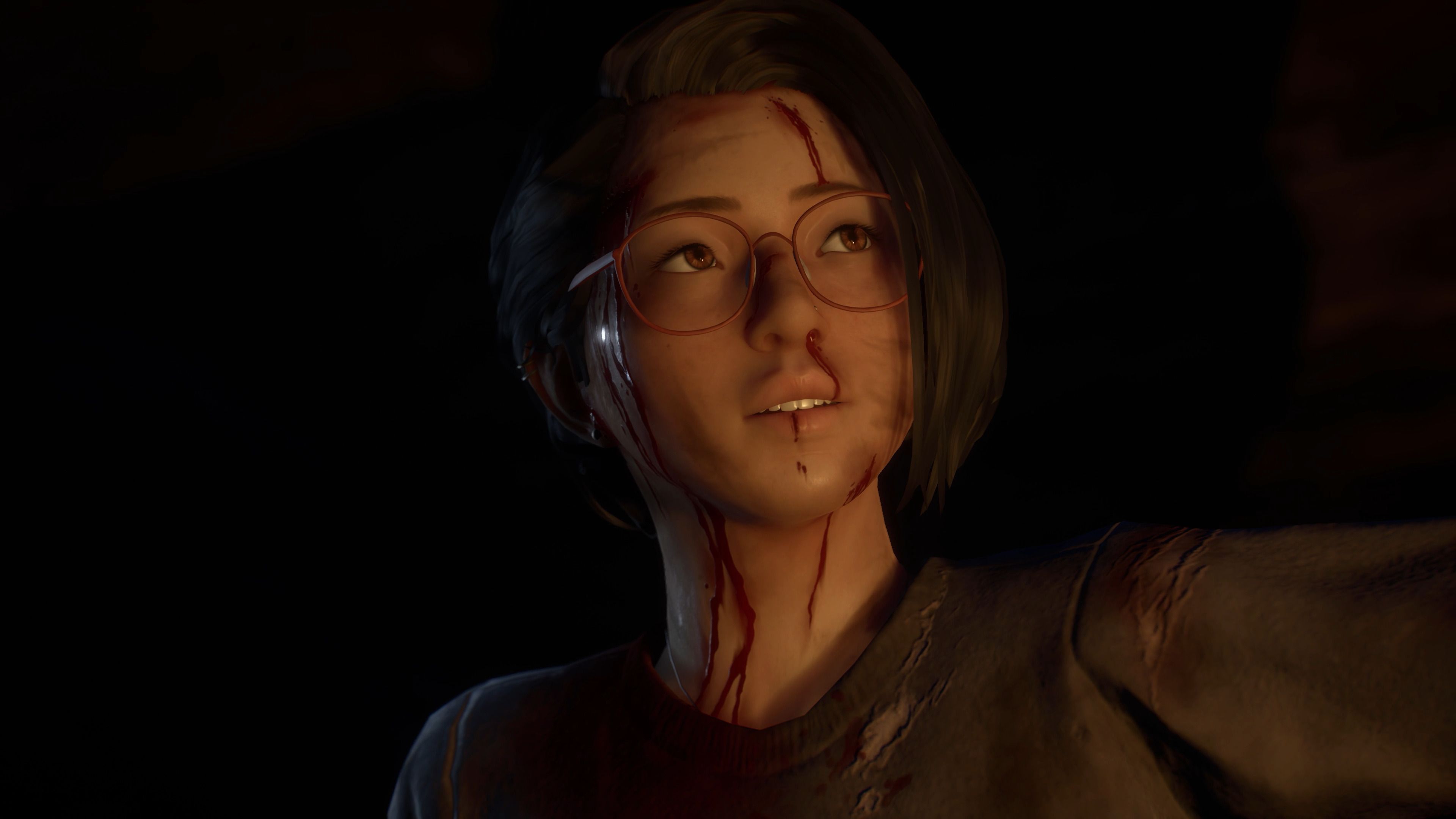“Han [Soto, voice of Gabe Chen] and I actually had our audition together, and after it he’s walking away from me and just tosses over his shoulder and goes ‘I’ll see you on set!’ and I’m like okay, we got this,” Erika Mori tells me about landing the role of Alex Chen in Life is Strange: True Colors alongside Han Soto’s Gabe Chen. The emotional adventure was met with critical and commercial acclaim when it launched last month, and I recently had a chance to ruminate on its success alongside the two actors and narrative director Jonathan Zimmerman.
As newcomers to the world of gaming, Mori and Soto’s audition was a playful yet experimental one, but it seems the duo immediately exuded the chemistry required to portray the two estranged siblings amidst the town of Haven Springs. One of the greatest achievements of True Colors is how it uses motion capture to depict human characters that feel tangibly real, a technology that was new to both the actors and development team.
“It was new to me, so I did a lot of research on animal movement and the way certain ones move with their body,” Soto tells me. “I read that and it really helped me, otherwise I’d be moving around like a giraffe right now. You know the way cheetahs move and the way certain animals move throughout the space? I think that really helped a lot with the space that I came from, because I had no experience in performance capture but thankfully I had colleagues to work with who made things so much easier.”
While Mori wasn’t imitating giraffes on set, as fun as that sounds, she echoes a similar sentiment about the challenges and benefits of motion capture. “The motion capture team at Deck Nine really walked us all through it,” she says. “Most of the cast, myself included, were brand new to motion capture and it was really cool being on set every day because the team wasn’t afraid to try something a little different or make adjustments to the rig or tech to try and get higher fidelity in terms of the performance. We knew it’s what we needed in order to make a game about empathy really resonate since you have to be able to read the emotions that these characters are feeling.”
Zimmerman says that the audition process was deliberately vague, given that so many projects in the past have been leaked thanks to casting calls. All anyone knew was that Deck Nine was working on a “new Square Enix project” but once the team involved became clear, it didn’t take long for fans to connect the dots. When teasing their work on social media, actors were asked to tag their location as Los Angeles as opposed to Denver, Colorado, throwing speculative viewers off the scent that something might be going down in the world of Life is Strange. It worked, but Zimmerman, Mori, and Soto were relieved when the cat was finally out of the bag, allowing them to share the work they’d been toiling away over for so long. Whether players would take to this new direction was another question entirely.
“I don’t get emotional about a lot of things,” Soto says. “But I was watching a walkthrough [of True Colors] for the first time and it was so intense and pulling on strings I didn’t even know I had. I had to stop watching and play it for myself because I didn’t want to ruin it. It’s so powerful and I was just so impressed with the environment they created because my wife isn’t involved in this space and asked me ‘Is that an actual city in Colorado?’ and no, it’s completely made up, but it really feels like you’re in a real place when you’re playing the game.”
Mori is similarly astounded by how much of an impact a game like this is able to have, with the duo not being fully aware of how integral Life is Strange has become to the narrative adventure genre in recent years. To them, it was all completely new, which is arguably a stronger perspective to have than someone who knows all of the previous games like the back of their hand. “It is surreal to watch it all from end to end,” Mori explains. “It’s also really wonderful to see the response has been mostly very positive and such a relief to see people fall in love with Haven Springs and these characters just like the cast and crew of Deck Nine fell in love with them. It’s surreal to have this piece of art finally out there after so many years.”
Alex and Gabe are also two strong and passionate Asian-American characters, with their heritage never being treated as a lazy plot device that leans into needless cliches. It’s more than that. “The character of Alex is a huge relief and such a gift because she’s not a trope,” Mori says. “She’s not an Asian cliche, she’s not like the Asian best friend or the tiger mum, or the mean neighbour and I’ve been given a lot of those characters to play and it’s taxing, it’s a bit exhausting. It shows that the characters that the narrative team have created are real, fully-fledged people and not cliches, not tropes. It’s refreshing and speaks to all of the talent Deck Nine has.”
“It’s a testament to how well travelled the writers are,” Soto adds. “When I first started 10 years ago, I was getting stuff like ‘Oh hurry up and buy!’ and ‘I don’t want any trouble!’ and like what is this junk? This just sets [Asian people] back, the entirety of humanity back because it doesn’t just affect Asian people, it affects everyone involved. That has to go through different levels of approval, so you can’t just blame the writers for writing it. It’s all just to go ‘Yeah this awesome, huh, so funny’ but it just doesn’t do us any good.
“John and the guys at Deck Nine just killed it. I actually haven’t seen, not just in the game side but on the film side, I mean there’s stuff like Minari which is a great movie, but I can count on one hand the projects where Asian characters are really allowed to be explored. I can’t think of any other movies [or games] that have done that, and this is over 20-30 years of history, so [True Colors] should be very proud.”
“All of us really, really care about authenticity,” Zimmerman says. “Presenting different kinds of representation in a way that creates a really inclusive world that players can get to know, coming from all different backgrounds. It’s also really helpful that our actors are collaborators, we bring them into the studio and work with them on set and I think if we had written anything that was out of bounds I feel pretty confident that Erika or Han would let us know that this isn’t authentic.”
Representation is a huge part of Life is Strange: True Colors, but it’s also a game about grief, empathy, and dealing with emotions that can easily destroy you. Gabe Chen passes away in the game’s opening act, and Alex is left to deal with his absence over the course of the narrative in a deep, profoundly moving way.
“It goes to show that everything you do in life leaves behind a residue with all of the people you’ve touched,” Soto tells me. “That’s how I went into the [rooftop scene] because it felt like such a huge responsibility to come back like that. Gabe had to shepherd Alex through and get her to the finish line in the way she needed to, and I’m so glad we didn’t do it with me as a hologram or something.”
The rooftop scene might be the game’s finest moment, a touching farewell between Gabe and Alex Chen where all of the decisions made throughout the game are laid out by Han’s character as the player is asked to make a vital decision. Do they stay in Haven Springs to build a life with the people they’ve come to love, or do they throw it all away for a life on the road as they step into the relative unknown? Both options are valid, but from a gameplay and performance perspective that was not easy to execute, and actually surfaced rather late into development according to Zimmerman.
“Writing it, the challenge for me was working through the morass of conditional content to get to the heart of the drama,” he says. “In narrative adventure it gets harder and harder the deeper you get into the game. So when you’re talking about the second to last scene in the entire game and leading up to a big choice, and tying together so many different threads, it almost becomes like a math problem. Tying all of those threads together in a reasonable way and then getting to a place that allowed me and all of us to step back and say, what is the actual experience coming through here? What is the final message that we want to leave Alex and the player with?
“Striking the right tone and making sure that we’re hitting it for every permutation imaginable with all of the conditionalized content. We’ve probably worked on the rooftop scene, from a conceptual level, as much as any other scene in the entire game. When I play it, and when I see people responding to it, it amazes me that it works so well. It’s a testament to Erika and Han as much as anyone else because they brought the soul to all of the different variations.”
Away from the mechanical side of things, Mori touches on how beautiful this scene is from an emotional perspective. “I really like the idea that this is where Alex comes to have conversations with her brother,” she explains. “She carries him with her throughout the entire game, and it’s also one of the most beautiful places and beautifully shot scenes in Haven Springs. There’s a serenity about it, there’s a solidarity, a safety that when I watch these scenes, I can remember being present in the room.” While True Colors has fewer massive decisions than previous games, characters are still required to express a number of different emotions and mindsets at a moment’s notice, and for actors, this isn’t easy.
“Everyone’s got their process to compartmentalize and switch emotions,” Soto says. “There were some scenes where it was like one was really sad, one was super happy and excited, and I had to develop a new process for myself using red tape and green tape [in the script]. I mean, I had my entire binder taped up and I think the stock of gaffa tape went up that year because it was so colourful. But if I didn’t have the tape there, for me, what I was supposed to feel right now because writing things down just didn’t do it for me. Seeing that colour and knowing exactly where I needed to go for the next take was so important.”
“Jumping from scene to scene where they tended to require different emotions was certainly challenging,” Mori adds. “To speak to the branching nature of the script that John discussed earlier, chapter four and chapter five were real doozies. Thank goodness the team was there to help me keep things straight. We would have two lines of dialogue or two scenes and they all said similar things with different words, or different orders of words, depending on the choices that you made. I remember moments where I was like, okay, remember, you have done this, and this, then this, then this, then this, and then you chose this.”
I don’t envy actors who have to jump through so many hoops, but it’s all in service of characters that are now beloved by so many. Speaking of love, Alex Chen is hella bisexual, abandoning the notions of playersexuality that dominate so many other games where romance options are a possibility. Ryan and Steph can be friends, lovers, and so much in-between depending on the options you decide to pick, and Mori didn’t find this approach hard to navigate given how dreamy both of them are.
“Much like Alex, [Ryan and Steph] are so well written and so well defined that it wasn't hard to be attracted to either of them,” she explains. “But the attraction is different, depending on who you choose. I think you’re right, the romance, the relationship, the bonds, the intimacy between that trio regardless of whether you decide to romance somebody or not. It just felt authentic, they felt real, you would want to go bowling with these kinds of people, romantically or otherwise, and it was really, really lovely.”
The game’s final decision has you deciding on whether Alex will forgive Jed, a man who shot you, threw you down a mine shaft, and left you for dead to cover up his own corrupt past. I, and the majority of others, forgave him. Mori went off, and it was a sight to behold.
“I feel like such an asshole for saying this but when I got the scripts and they were walking me through it I thought ‘Okay, this is the end of the game and the final decision and I was like who is gonna forgive this tool?! Like, he shot you!’ I was absolutely flabbergasted like how is nobody going to condemn it and it turns out a lot of people are a lot nicer than me. Maybe it’s because my character was short and then fell down a mine and managed to fall down a mine with her glasses intact. But no, you condemn that guy.”
Soto had my back - he forgave Jed just like I did, while acknowledging how troubled this decision might be - what a legend. As for Zimmerman, he and the development team realised the decision was so powerful when passionate arguments began breaking out across Deck Nine. “I’m like Erika, or at least I was, I won’t say what I’d choose now, but when we came into the choice I just couldn’t understand how the player could bring themselves to forgiveness,” he says. “Having written and concepted that choice it probably affected me more than any other in the entire game. It’s the thing I think I will carry forward and mull over more than anything else. So I love that you choose forgiveness, I think it’s an absolutely beautiful choice to make and I hope it feels that way to players because it feels empowering for them in a way that Alex is using her powers by choosing to forgive.”
Mori closes off the conversation by revisiting her choice, and deciding that forgiving a murderous man from the mines might not be so bad after all. “I’ve listened to streamers go back and forth with people about what forgiveness really means,” she tells me. “What would condemnation mean? In nearly every playthrough I’ve watched people forgive him and it really gives you hope for humanity that there are so many people who despite seeing life just being kicked the shit out of a character that they grow to love and root for that there’s still a deep well of compassion and quite frankly love that drives people to choose forgiveness and it’s beautiful, and I strive to be one of those people one day.”

.jpg)
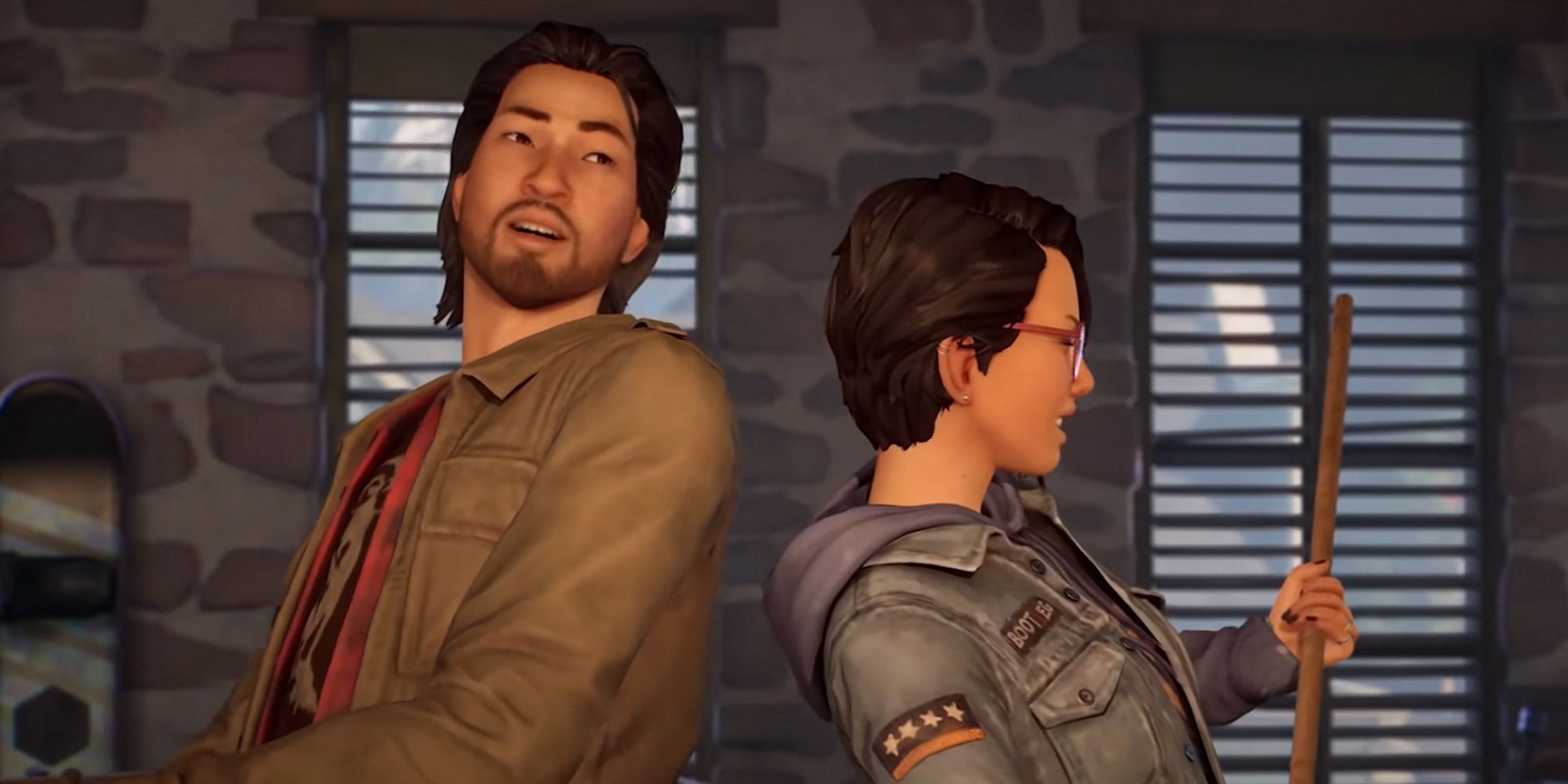
.jpg)
